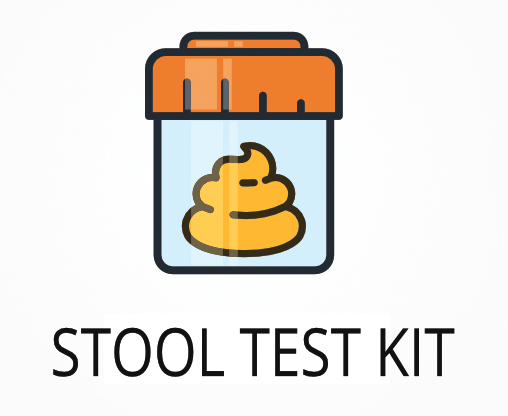Ordering the DNA Stool Test | Microbial Ecology Profile | Canada
Ordering the DNA Stool Test | Microbial Ecology Profile helps identify the types and balance of gut bacteria, yeast, and parasites in your digestive system. This test can show if there are too many or too few helpful or harmful microbes, which may affect digestion, mood, and immune response. Interestingly, some gut bacteria can influence how your body absorbs nutrients and even affect how you feel day to day.
When ordering this test, you can expect these specific benefits:
- Pinpoints imbalances in gut bacteria that may be linked to bloating, constipation, or diarrhea
- Detects the presence of yeast, such as Candida, and common gut parasites
- Shows how well your gut bacteria break down food and support nutrient absorption
- Identifies bacteria that may be connected to skin issues or mood changes
- Provides drug sensitivity results for certain bacteria and yeast, guiding targeted treatment options
Who Should Consider Gut Microbiome Analysis
People who have ongoing digestive problems, such as frequent gas, stomach pain, or changes in bowel habits, may benefit from this test. For example, someone who has tried different diets and probiotics but still feels tired, foggy, or has skin breakouts could use this test to find out if gut bacteria are playing a role.
Ordering this test may also be helpful in these situations:
- Unexplained fatigue or low energy that does not improve with rest
- Recurring yeast infections or symptoms of Candida overgrowth
- Food intolerances or sensitivities that seem to be getting worse
- Frequent mood swings or trouble focusing that may be linked to gut-brain signals
- Unexpected weight changes that do not match changes in diet or activity
Testing for gut bacteria, yeast, and parasites can help you and your doctor find the cause of symptoms like bloating, constipation, or skin problems, and guide the right treatment. Delaying this test may allow gut imbalances to continue, which could make symptoms harder to manage over time.
How to Prepare for Microbial Ecology Stool Analysis
Fasting is not required for this stool test, so you can eat and drink as usual before collecting your sample. Always follow the instructions provided by your doctor or healthcare practitioner to make sure your sample is collected and shipped correctly.
Labs Included When Ordering Your DNA Stool Test | Microbial Ecology Profile
| Test Name | Reference Range | Significance | Low and High Levels of DNA Stool Test | Microbial Ecology Profile |
|---|---|---|---|
| Good Gut Bacteria (Commensal/Opportunistic) | |||
| Bacteroidetes Phylum | 108–1011 CFU/g | Bacteroidetes help break down plant fibers and produce short-chain fatty acids that support gut lining and immune function. |
High levels mean possible overgrowth, which may be linked to diarrhea or gut inflammation.
Low levels mean reduced fiber breakdown and may be linked to constipation or poor nutrient absorption. |
| Bacteroides-Prevotella group | 108–1010 CFU/g | These bacteria help digest carbohydrates and proteins, supporting energy production and gut health. |
High levels mean possible imbalance, sometimes linked to inflammation or loose stools.
Low levels mean less support for digestion and may be linked to constipation or food intolerance. |
| Bacteroides vulgatus | 107–109 CFU/g | Bacteroides vulgatus helps break down complex sugars and supports a balanced gut environment. |
High levels mean possible gut inflammation or dysbiosis.
Low levels mean reduced carbohydrate breakdown and may affect nutrient absorption. |
| Barnesiella spp. | 106–108 CFU/g | Barnesiella supports gut barrier function and may help protect against harmful bacteria. |
High levels mean possible overgrowth, which may disrupt gut balance.
Low levels mean less protection against harmful bacteria. |
| Odoribacter spp. | 106–108 CFU/g | Odoribacter produces short-chain fatty acids that help maintain gut lining and reduce inflammation. |
High levels mean possible imbalance, sometimes linked to loose stools.
Low levels mean less support for gut lining and may increase inflammation risk. |
| Prevotella spp. | 107–109 CFU/g | Prevotella helps digest plant-based foods and supports a healthy gut environment. |
High levels mean possible link to inflammation or loose stools.
Low levels mean less fiber breakdown and may be linked to constipation. |
| Firmicutes Phylum | 108–1011 CFU/g | Firmicutes help break down dietary fats and produce vitamins, supporting digestion and energy. |
High levels mean possible link to weight gain or metabolic changes.
Low levels mean less support for fat digestion and vitamin production. |
| Faecalibacterium prausnitzii | 107–109 CFU/g | This bacteria produces anti-inflammatory compounds and supports gut lining health. |
High levels mean rare, but may indicate imbalance.
Low levels mean increased risk of gut inflammation and digestive discomfort. |
| Lactobacillus spp. | 106–108 CFU/g | Lactobacillus helps digest lactose, supports immune function, and keeps harmful bacteria in check. |
High levels mean possible overgrowth, sometimes linked to gas or bloating.
Low levels mean less support for digestion and immune response. |
| Bifidobacterium spp. | 107–109 CFU/g | Bifidobacterium helps break down fiber, supports immune function, and protects against harmful bacteria. |
High levels mean rare, but may indicate imbalance.
Low levels mean less support for digestion and increased risk of gut infections. |
| Akkermansia muciniphila | 106–108 CFU/g | Akkermansia helps maintain the gut lining and may support weight management and metabolic health. |
High levels mean possible link to gut barrier changes.
Low levels mean reduced gut lining support and may be linked to inflammation. |
| Bacteria (Culture) | |||
| Escherichia coli | 106–108 CFU/g | E. coli is a normal gut bacteria but can cause problems if overgrown or if harmful strains are present. |
High levels mean possible infection or gut inflammation.
Low levels mean less support for digestion and vitamin K production. |
| Bifidobacterium | 107–109 CFU/g | Bifidobacterium supports digestion, immune function, and helps keep harmful bacteria in check. |
High levels mean rare, but may indicate imbalance.
Low levels mean less support for digestion and increased risk of gut infections. |
| Lactobacillus spp. | 106–108 CFU/g | Lactobacillus helps digest lactose and supports immune function. |
High levels mean possible overgrowth, sometimes linked to gas or bloating.
Low levels mean less support for digestion and immune response. |
| Additional Bacteria | |||
| alpha haemolytic Streptococcus | Not detected | This bacteria can be part of normal gut flora but may cause problems if overgrown. |
High levels mean possible infection or imbalance.
Low levels mean normal or absent, usually not a concern. |
| Citrobacter freundii | Not detected | Citrobacter can cause gut infections if present in high amounts. |
High levels mean possible infection or diarrhea.
Low levels mean normal or absent, usually not a concern. |
| Klebsiella oxytoca | Not detected | Klebsiella can cause gut infections and may be linked to inflammation if overgrown. |
High levels mean possible infection or gut inflammation.
Low levels mean normal or absent, usually not a concern. |
| gamma haemolytic Streptococcus | Not detected | This bacteria is usually harmless but can cause problems if overgrown. |
High levels mean possible infection or imbalance.
Low levels mean normal or absent, usually not a concern. |
| Pseudomonas aeruginosa | Not detected | Pseudomonas can cause gut infections, especially in people with weakened immune systems. |
High levels mean possible infection or gut inflammation.
Low levels mean normal or absent, usually not a concern. |
| Mycology | |||
| Candida kruseii | Not detected | Candida is a yeast that can cause digestive symptoms if it grows too much in the gut. |
High levels mean possible yeast overgrowth, which may cause bloating, gas, or fatigue.
Low levels mean normal or absent, usually not a concern. |
| Parasitology | |||
| Cryptosporidium | Not detected | Cryptosporidium is a parasite that can cause diarrhea and stomach pain if present. |
High levels mean possible infection, which may cause diarrhea or cramps.
Low levels mean normal or absent, usually not a concern. |
| Giardia lamblia | Not detected | Giardia is a parasite that can cause digestive upset, including diarrhea and bloating. |
High levels mean possible infection, which may cause diarrhea or bloating.
Low levels mean normal or absent, usually not a concern. |
| Entamoeba histolytica | Not detected | Entamoeba is a parasite that can cause stomach pain and diarrhea if present. |
High levels mean possible infection, which may cause stomach pain or diarrhea.
Low levels mean normal or absent, usually not a concern. |
| Bacteria Drug Sensitivity Testing | |||
| Pseudomonas aeruginosa (Drug Sensitivity) | Sensitive/Resistant | Shows which antibiotics and natural agents may work best if this bacteria is found in high amounts. |
High levels mean targeted treatment may be needed.
Low levels mean no action needed. |
| Klebsiella oxytoca (Drug Sensitivity) | Sensitive/Resistant | Helps guide treatment if this bacteria is present, showing which drugs or natural agents may be effective. |
High levels mean targeted treatment may be needed.
Low levels mean no action needed. |
| Citrobacter freundii (Drug Sensitivity) | Sensitive/Resistant | Shows which antibiotics or natural agents may help if this bacteria is found in high amounts. |
High levels mean targeted treatment may be needed.
Low levels mean no action needed. |
| Candida kruseii (Drug Sensitivity) | Sensitive/Resistant | Shows which antifungal drugs or natural agents may work best if this yeast is present in high amounts. |
High levels mean targeted antifungal treatment may be needed.
Low levels mean no action needed. |
Reference ranges may change slightly as labs update their methods and guidelines.
DNA Stool Test | Microbial Ecology Profile FAQ
Is there DNA Stool Test | Microbial Ecology Profile testing near me?
This is a home test kit, so you can collect your stool sample at home and send it to the lab using prepaid shipping. For those dealing with ongoing digestive symptoms, being able to collect your sample locally means you don’t have to travel or wait for an appointment, making the process easier and more accessible.
How do I interpret the test results?
While your treating physician should review your results, we also offer a one-on-one test results review with our clinical team to help you understand your report and next steps.
What is the cost of the test?
The price you see for this test includes standard shipping to your address and return shipping to the lab, but draw fees may apply. Ordering this test can help you find the cause of symptoms like bloating or fatigue, so you can start targeted treatment sooner.
How often should I retest?
Retesting is usually recommended every 6 to 12 months, especially if you are making changes to your diet, probiotics, or treatment plan. Regular testing helps track changes in your gut bacteria and shows if your plan is working.
How accurate is the test?
This test uses DNA analysis (PCR) to detect and measure gut bacteria, yeast, and parasites, with a specificity of 98% and sensitivity of 97%. TrueHealthLabs.com partners with CLIA-certified and CAP-certified laboratories to uphold rigorous testing standards for dependable results.
Important Notes
- Bacteriology, Mycology, and Parasitology: Only positive results will show on report. If not detected, results will not show.
- Sample Report
- Kit Instructions
Medical Review Board
Reviewed by Jeff Donohue M.D. from Body Logic and Brady Hurst DC, CCCN. Written by True Health Lab’s team of editorial health contributors.
Disclaimer: This information is for educational purposes only and not intended as medical advice. Consult your healthcare provider for personalized guidance.
Why Customers Trust True Health Labs - What People are saying
Also rated 4.6 out of 5 based on 3452 ShopperApproved reviews- See all TrueHealthLabs.com reviews.






